Zhaoyuan Yin
TransFGU: A Top-down Approach to Fine-Grained Unsupervised Semantic Segmentation
Dec 02, 2021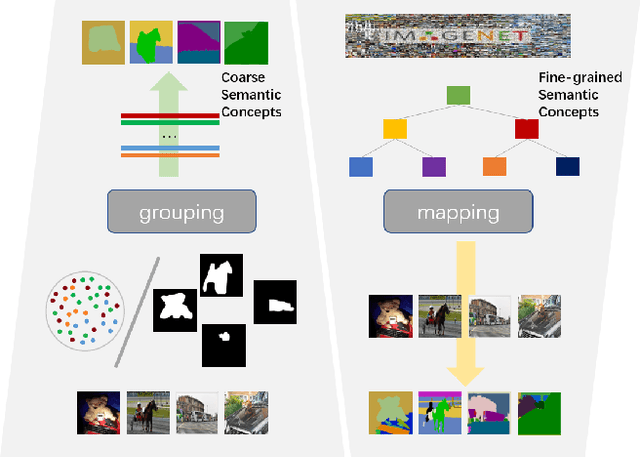
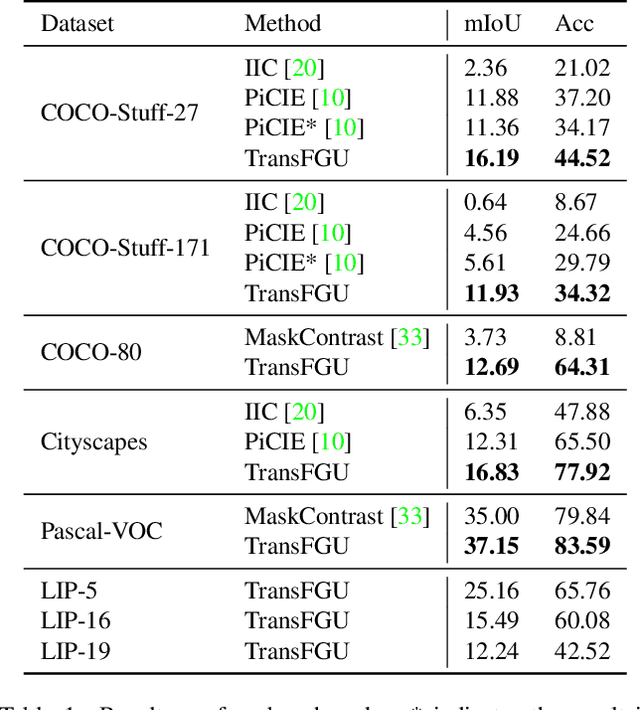
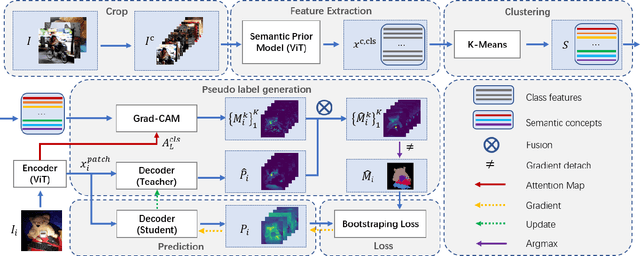

Abstract:Unsupervised semantic segmentation aims to obtain high-level semantic representation on low-level visual features without manual annotations. Most existing methods are bottom-up approaches that try to group pixels into regions based on their visual cues or certain predefined rules. As a result, it is difficult for these bottom-up approaches to generate fine-grained semantic segmentation when coming to complicated scenes with multiple objects and some objects sharing similar visual appearance. In contrast, we propose the first top-down unsupervised semantic segmentation framework for fine-grained segmentation in extremely complicated scenarios. Specifically, we first obtain rich high-level structured semantic concept information from large-scale vision data in a self-supervised learning manner, and use such information as a prior to discover potential semantic categories presented in target datasets. Secondly, the discovered high-level semantic categories are mapped to low-level pixel features by calculating the class activate map (CAM) with respect to certain discovered semantic representation. Lastly, the obtained CAMs serve as pseudo labels to train the segmentation module and produce final semantic segmentation. Experimental results on multiple semantic segmentation benchmarks show that our top-down unsupervised segmentation is robust to both object-centric and scene-centric datasets under different semantic granularity levels, and outperforms all the current state-of-the-art bottom-up methods. Our code is available at \url{https://github.com/damo-cv/TransFGU}.
Learning to Recommend Frame for Interactive Video Object Segmentation in the Wild
Mar 18, 2021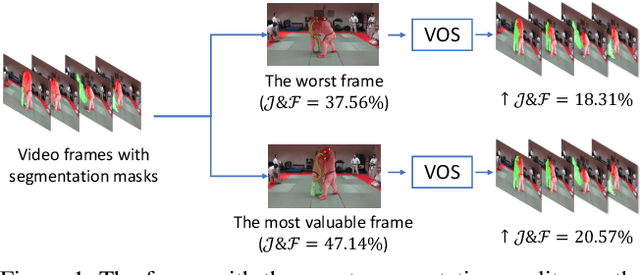

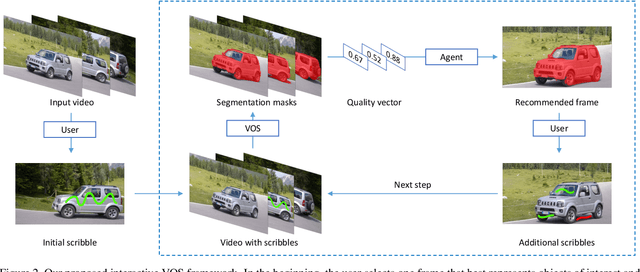
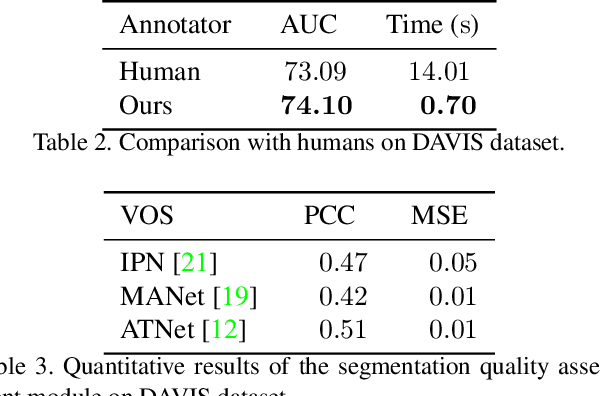
Abstract:This paper proposes a framework for the interactive video object segmentation (VOS) in the wild where users can choose some frames for annotations iteratively. Then, based on the user annotations, a segmentation algorithm refines the masks. The previous interactive VOS paradigm selects the frame with some worst evaluation metric, and the ground truth is required for calculating the evaluation metric, which is impractical in the testing phase. In contrast, in this paper, we advocate that the frame with the worst evaluation metric may not be exactly the most valuable frame that leads to the most performance improvement across the video. Thus, we formulate the frame selection problem in the interactive VOS as a Markov Decision Process, where an agent is learned to recommend the frame under a deep reinforcement learning framework. The learned agent can automatically determine the most valuable frame, making the interactive setting more practical in the wild. Experimental results on the public datasets show the effectiveness of our learned agent without any changes to the underlying VOS algorithms. Our data, code, and models are available at https://github.com/svip-lab/IVOS-W.
 Add to Chrome
Add to Chrome Add to Firefox
Add to Firefox Add to Edge
Add to Edge